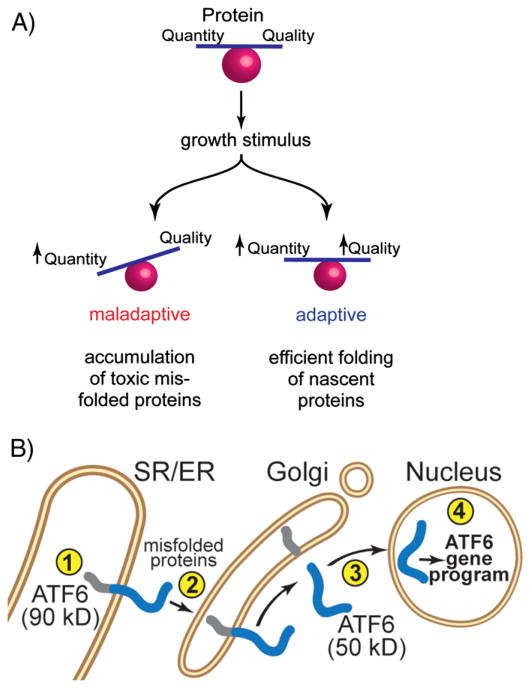Fig. 1.
Balancing protein quantity and quality at the sarco/endoplasmic reticulum of cardiac myocytes: Panel A — Balancing protein quantity and quality is required for adaptive responses to growth stimuli: Upon a growth stimulus, if protein synthesis increases without a coordinate increase in the ability to monitor and control protein quality (left), the response is maladaptive due to the accumulation of toxic misfolded proteins. However, when increases in protein synthesis are balanced with the cellular ability to control protein quality (right), the response is adaptive. Panel B — ATF6 is a component of the SR/ER protein quality control network: ATF6 resides in the SR/ER of cardiac myocytes (➀). Accumulation of misfolded proteins in the ischemic or hypertrophic heart results in the translocation of ATF6 to the Golgi apparatus (➁), where it is cleaved by transmembrane proteases (➂), which liberates a cytosolic, 50 kD fragment. The 50 kD fragment of ATF6 has a nuclear localization sequence that facilitates the translocation of ATF6 to the nucleus, where it binds to specific elements in the regulatory regions of ATF6-responsive genes and regulates the ATF6 gene program (➃).

